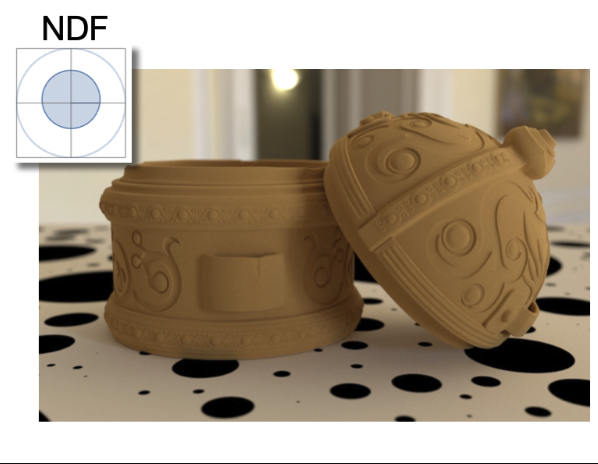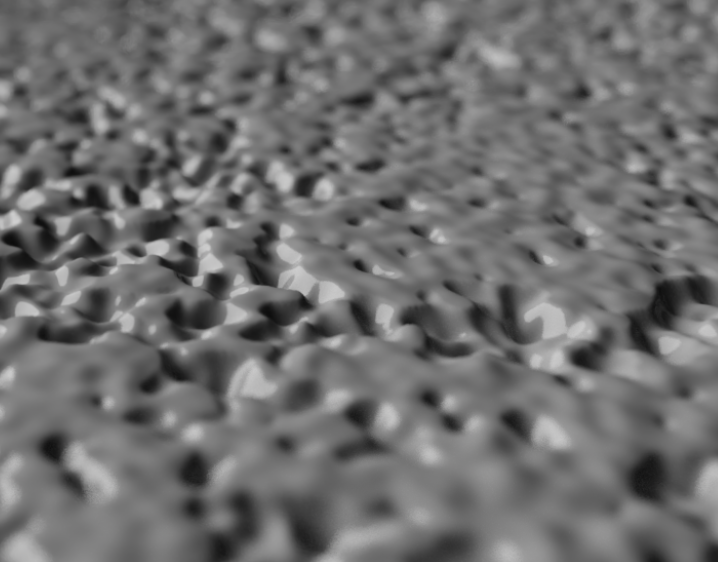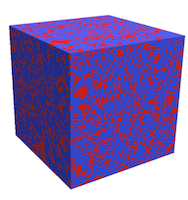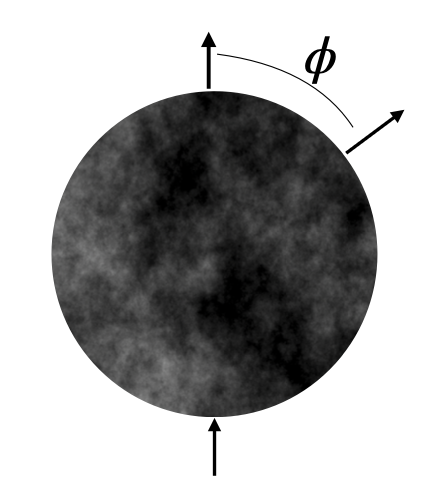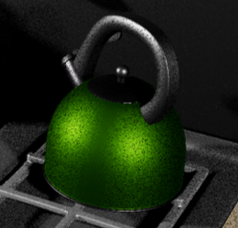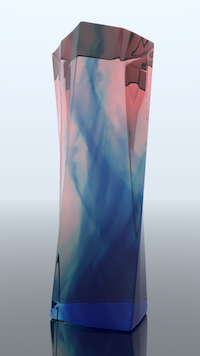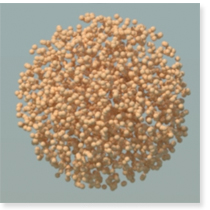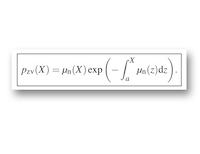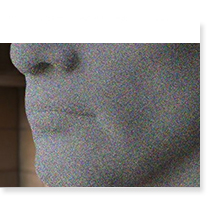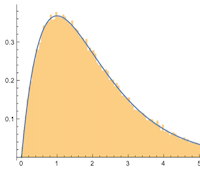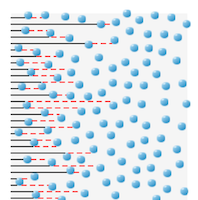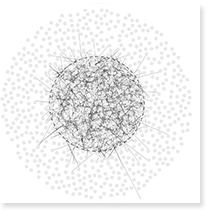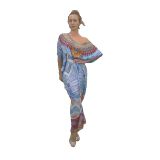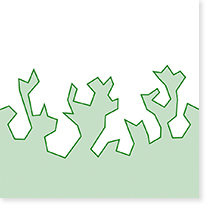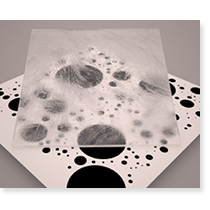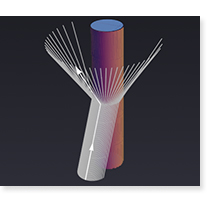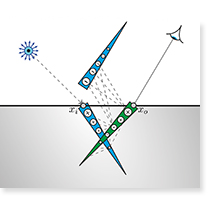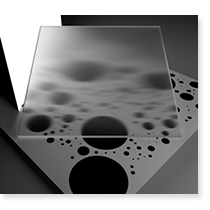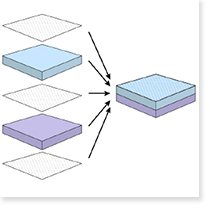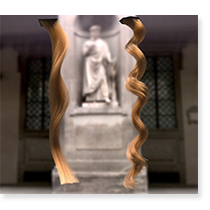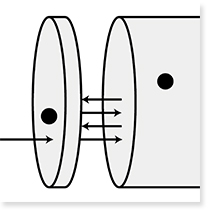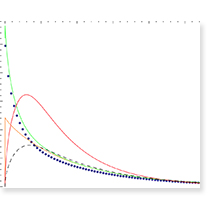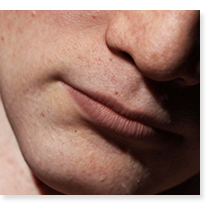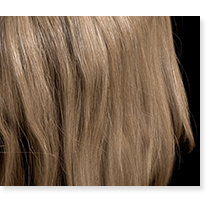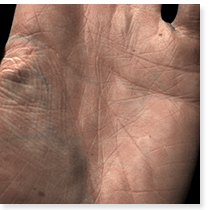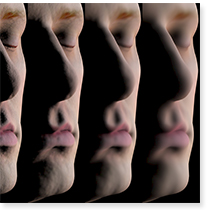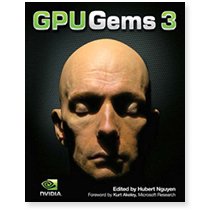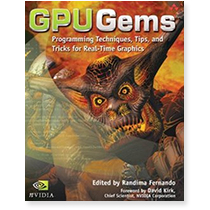Principal Research Scientist at NVIDIA
Publications
Computer graphics research with a twist of neutron transport
BOOK
A Hitchhiker’s Guide to Multiple
Scattering
Exact Analytic, Monte Carlo and Approximate Solutions in Transport Theory
Eugene d’Eon
[free pdf]
Exact Analytic, Monte Carlo and Approximate Solutions in Transport Theory
Eugene d’Eon
[free pdf]
PAPERS
2025
High-Precision Benchmarks for the Stochastic Rod
Eugene d'Eon | Anil Prinja
Nuclear Science and Engineering
[pdf]
Eugene d'Eon | Anil Prinja
Nuclear Science and Engineering
[pdf]
2024
Appearance Modeling of Iridescent Feathers with Diverse Nanostructures
Yunchen Yu | Andrea Weidlich | Bruce Walter | Eugene d'Eon | Steve Marschner
SIGGRAPH Asia 2024
[pdf]
Yunchen Yu | Andrea Weidlich | Bruce Walter | Eugene d'Eon | Steve Marschner
SIGGRAPH Asia 2024
[pdf]
Reconstructing Translucent Thin Objects from Photos
Xi Deng | Lifan Wu | Bruce Walter | Eugene d'Eon | Ravi Ramamoorthi | Steve Marschner | Andrea Weidlich
SIGGRAPH Asia 2024
[pdf]
Xi Deng | Lifan Wu | Bruce Walter | Eugene d'Eon | Ravi Ramamoorthi | Steve Marschner | Andrea Weidlich
SIGGRAPH Asia 2024
[pdf]
A Generalized Ray Formulation For Wave-Optics Rendering
Shlomi Steinberg | Ravi Ramamoorthi | Benedikt Bitterli | Eugene d'Eon | Ling-Qi Yan | Matt Pharr
SIGGRAPH Asia 2024
[pdf]
Shlomi Steinberg | Ravi Ramamoorthi | Benedikt Bitterli | Eugene d'Eon | Ling-Qi Yan | Matt Pharr
SIGGRAPH Asia 2024
[pdf]
A Free-Space Diffraction BSDF
Shlomi Steinberg | Ravi Ramamoorthi | Benedikt Bitterli | Arshiya Mollazainali | Eugene d'Eon | Matt Pharr
SIGGRAPH 2024
[pdf]
Shlomi Steinberg | Ravi Ramamoorthi | Benedikt Bitterli | Arshiya Mollazainali | Eugene d'Eon | Matt Pharr
SIGGRAPH 2024
[pdf]
From microfacets to participating media: A unified theory of light transport with stochastic geometry
Dario Seyb | Eugene d’Eon | Benedikt Bitterli | Wojciech Jarosz
SIGGRAPH 2024
[pdf]
Dario Seyb | Eugene d’Eon | Benedikt Bitterli | Wojciech Jarosz
SIGGRAPH 2024
[pdf]
VMF Diffuse: A Unified Rough Diffuse BRDF
Eugene d’Eon | Andrea Weidlich
EGSR 2024
[pdf] [Mathematica] [ShaderToy]
Eugene d’Eon | Andrea Weidlich
EGSR 2024
[pdf] [Mathematica] [ShaderToy]
2023
An Approximate Mie Scattering Function for Fog and Cloud Rendering
Johannes Jendersie | Eugene d’Eon
SIGGRAPH 2023 Talks
[pdf]
Johannes Jendersie | Eugene d’Eon
SIGGRAPH 2023 Talks
[pdf]
Student-T and Beyond: Practical Tools for Multiple-Scattering BSDFs with General NDFs
Eugene d’Eon
SIGGRAPH 2023 Talks
[pdf]
Eugene d’Eon
SIGGRAPH 2023 Talks
[pdf]
Microfacet Theory for Non-uniform Heightfields
Eugene d’Eon | Benedikt Bitterli | Andrea Weidlich | Tizian Zeltner
SIGGRAPH 2023 Papers
[pdf]
Eugene d’Eon | Benedikt Bitterli | Andrea Weidlich | Tizian Zeltner
SIGGRAPH 2023 Papers
[pdf]
Beyond Renewal Approximations: A 1D Point Process Approach to Linear Transport in Stochastic Media
Eugene d’Eon
ANS M&C 2023
[pdf]
Eugene d’Eon
ANS M&C 2023
[pdf]
2022
A Position-Free Path Integral for Homogeneous Slabs and Multiple Scattering on Smith Microfacets
Benedikt Bitterli | Eugene d’Eon
EGSR 2022
[pdf]
Benedikt Bitterli | Eugene d’Eon
EGSR 2022
[pdf]
2021
An unbiased ray-marching transmittance estimator
Markus Kettunen | Eugene d’Eon | Jacopo Pantaleoni | Jan Novak
SIGGRAPH 2021
[pdf]
Markus Kettunen | Eugene d’Eon | Jacopo Pantaleoni | Jan Novak
SIGGRAPH 2021
[pdf]
Markovian Binary Mixtures: Benchmarks for the albedo problem
Coline Larmier | Eugene d’Eon | Andrea Zoia
ANS M&C 2023
[pdf]
Coline Larmier | Eugene d’Eon | Andrea Zoia
ANS M&C 2023
[pdf]
An analytic BRDF for materials with spherical Lambertian scatterers
Eugene d’Eon
EGSR 2021 (Best Paper Award)
[pdf] [video] [code]
Eugene d’Eon
EGSR 2021 (Best Paper Award)
[pdf] [video] [code]
2020
Zero-Variance Theory for Efficient Subsurface Scattering
Eugene d’Eon | Jaroslav Křivánek
SIGGRAPH 2020 Courses: Advances in Monte Carlo rendering: the legacy of Jaroslav Křivánek
[pdf] [video] [code]
Eugene d’Eon | Jaroslav Křivánek
SIGGRAPH 2020 Courses: Advances in Monte Carlo rendering: the legacy of Jaroslav Křivánek
[pdf] [video] [code]
Random variate generation/Importance sampling using integral transforms
Eugene d’Eon
Tech Report
[pdf] [code]
Eugene d’Eon
Tech Report
[pdf] [code]
2019
A Reciprocal Formulation of Nonexponential Radiative Transfer. 2: Monte Carlo Estimation and Diffusion Approximation
Eugene d’Eon
The Journal of Computational and Theoretical Transport
[pdf]
Eugene d’Eon
The Journal of Computational and Theoretical Transport
[pdf]
The Albedo Problem in Nonexponential Radiative Transfer
Eugene d’Eon
International Conference on Transport Theory (ICTT) – September, 2019, Paris
[pdf]
Eugene d’Eon
International Conference on Transport Theory (ICTT) – September, 2019, Paris
[pdf]

Nonexponential Radiative Transfer: Reciprocity, Monte Carlo Estimation and Diffusion Approximation
Eugene d’Eon
International Conference on Transport Theory (ICTT) – September, 2019, Paris
Eugene d’Eon
International Conference on Transport Theory (ICTT) – September, 2019, Paris
Radiative Transfer in half spaces of arbitrary dimension
Eugene d’Eon
The Journal of Computational and Theoretical Transport
[pdf]
Eugene d’Eon
The Journal of Computational and Theoretical Transport
[pdf]
2018
Isotropic Scattering in a Flatland Half-Space
Eugene d’Eon
The Journal of Computational and Theoretical Transport
[pdf]
Eugene d’Eon
The Journal of Computational and Theoretical Transport
[pdf]
A Reciprocal Formulation of Nonexponential Radiative Transfer. 1: Sketch and Motivation
Eugene d’Eon
The Journal of Computational and Theoretical Transport
[pdf]
Eugene d’Eon
The Journal of Computational and Theoretical Transport
[pdf]
2017
JPEG Pleno Database: 8i Voxelized Full Bodies (8iVFB v2) – A Dynamic Voxelized Point Cloud Dataset
Eugene d’Eon | Bob Harrison | Taos Myers | Philip A. Chou
ISO/IEC JTC1/SC29 Joint WG11/WG1 (MPEG/JPEG) input document WG11M40059/WG1M74006, Geneva, January 2017
[data]
Eugene d’Eon | Bob Harrison | Taos Myers | Philip A. Chou
ISO/IEC JTC1/SC29 Joint WG11/WG1 (MPEG/JPEG) input document WG11M40059/WG1M74006, Geneva, January 2017
[data]
2016
Additional Progress Towards the Unification of Microfacet and Microflake Theories
Jonathan Dupuy | Eric Heitz | Eugene d’Eon
EGSR 2016
[pdf]
Jonathan Dupuy | Eric Heitz | Eugene d’Eon
EGSR 2016
[pdf]
Diffusion approximations for nonclassical Boltzmann transport in arbitrary dimension
Eugene d’Eon
Tech Report
[pdf]
Eugene d’Eon
Tech Report
[pdf]
Multiple-Scattering Microfacet BSDFs with the Smith Model
Eric Heitz | Johannes Hanika | Eugene d’Eon | Carsten Dachsbacher
SIGGRAPH 2016
[pdf]
Eric Heitz | Johannes Hanika | Eugene d’Eon | Carsten Dachsbacher
SIGGRAPH 2016
[pdf]
2014
A Zero-variance-based Sampling Scheme for Monte Carlo Subsurface Scattering
Jaroslav Krivanek | Eugene d’Eon
ACM SIGGRAPH 2014 Talks
[pdf]
Jaroslav Krivanek | Eugene d’Eon
ACM SIGGRAPH 2014 Talks
[pdf]
Computer graphics and particle transport: our common heritage, recent cross-field parallels and the future of our rendering equation
Eugene d’Eon
Digipro 2014
Eugene d’Eon
Digipro 2014
A Fiber Scattering Model With Non-Separable Lobes
Eugene d’Eon | Steve Marschner | Johannes Hanika
ACM SIGGRAPH Talks 2014
[1-page abstract] [slides] [supplemental]
Eugene d’Eon | Steve Marschner | Johannes Hanika
ACM SIGGRAPH Talks 2014
[1-page abstract] [slides] [supplemental]
Importance Sampling Microfacet-Based BSDFs using the Distribution of Visible Normals
Eric Heitz | Eugene d’Eon
EGSR 2014 (Best Paper Award)
[pdfs]
Eric Heitz | Eugene d’Eon
EGSR 2014 (Best Paper Award)
[pdfs]
A Comprehensive Framework for Rendering Layered Materials
Wenzel Jakob | Eugene d’Eon | Otto Jakob | Steve Marschner
ACM SIGGRAPH 2014
[pdf]
Wenzel Jakob | Eugene d’Eon | Otto Jakob | Steve Marschner
ACM SIGGRAPH 2014
[pdf]
2013
Rigorous asymptotic and moment-preserving diffusion approximations for generalized linear Boltzmann transport in arbitrary dimension
Eugene d’Eon
Transport Theory and Statistical Physics 2013
[pdf]
Eugene d’Eon
Transport Theory and Statistical Physics 2013
[pdf]
Importance Sampling for Physically-based Hair Fiber Models
Eugene d’Eon | Steve Marschner | Johannes Hanika
ACM SIGGRAPH Asia 2013 Talks
[pdf]
Eugene d’Eon | Steve Marschner | Johannes Hanika
ACM SIGGRAPH Asia 2013 Talks
[pdf]
A Principle of Invariant Imbedding with Memory
Eugene d’Eon
International Conference on Transport Theory 23 (Sept 2013, Santa Fe, New Mexico)
[pdf]
Eugene d’Eon
International Conference on Transport Theory 23 (Sept 2013, Santa Fe, New Mexico)
[pdf]
2012
2011
A Quantized-Diffusion Model for Rendering Translucent Materials
Eugene d’Eon | Geoffrey Irving
ACM SIGGRAPH 2011
[pdf]
Eugene d’Eon | Geoffrey Irving
ACM SIGGRAPH 2011
[pdf]
An Energy-Conserving Hair Reflectance Model
Eugene d’Eon | Guillaume Francois | Martin Hill | Joe Letteri | Jean-Marie Aubry
Eurographics Symposium on Rendering 2011
[pdf]
Eugene d’Eon | Guillaume Francois | Martin Hill | Joe Letteri | Jean-Marie Aubry
Eurographics Symposium on Rendering 2011
[pdf]
2008
A Layered, Heterogeneous Reflectance Model for Acquiring and Rendering Human Skin
Craig Donner | Tim Weyrich | Eugene d’Eon | Ravi Ramamoorthi | Szymon Rusinkiewicz
ACM SIGGRAPH Asia 2008
[pdf]
Craig Donner | Tim Weyrich | Eugene d’Eon | Ravi Ramamoorthi | Szymon Rusinkiewicz
ACM SIGGRAPH Asia 2008
[pdf]
2007
GPU Gems 3
Chapter 14: Advanced Techniques for Realistic Real-Time Skin Rendering
Chapter 24: The Importance of Being Linear
Chapter 14: Advanced Techniques for Realistic Real-Time Skin Rendering
Chapter 24: The Importance of Being Linear








